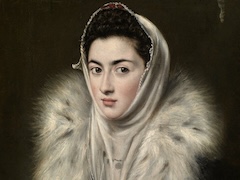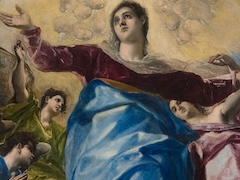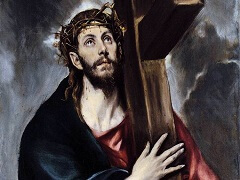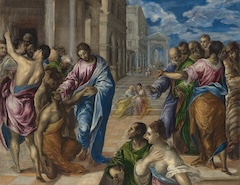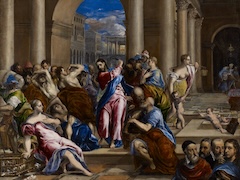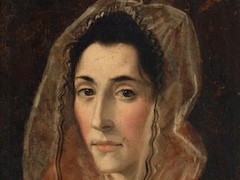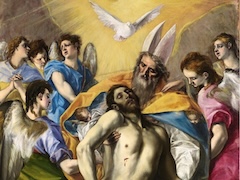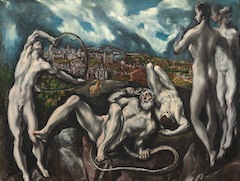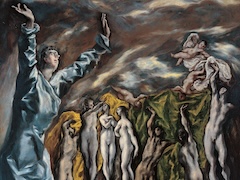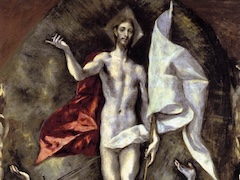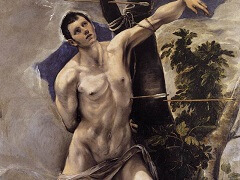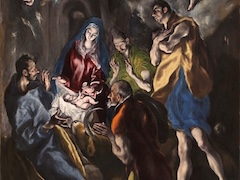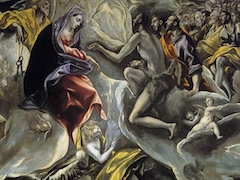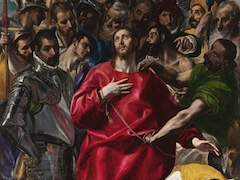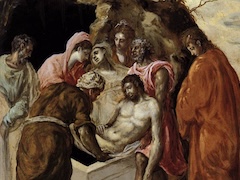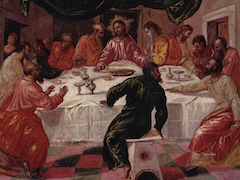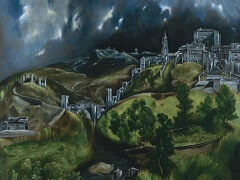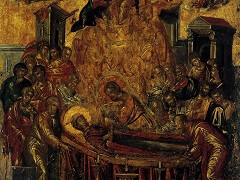St Martin and the Beggar, 1597-99 by El Greco
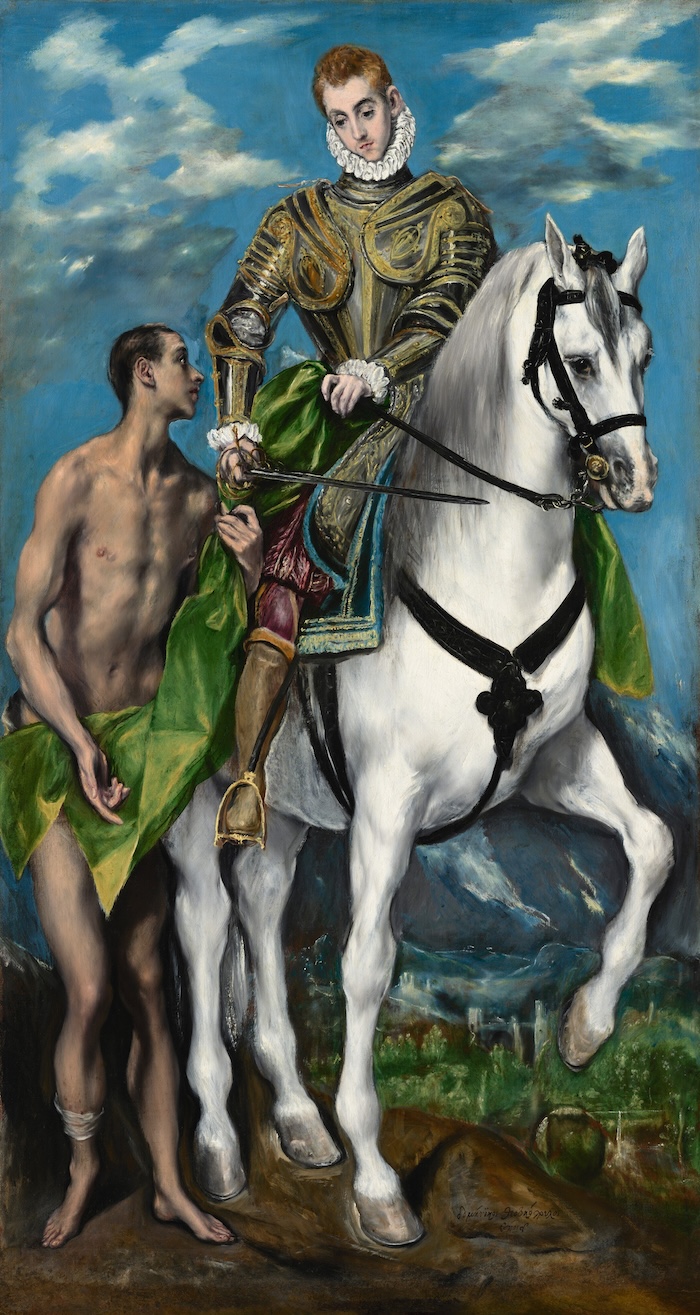
To be familiar with what we call miraculous, to be astonished with what is familiar, was always the sign of a true mystic. In this sense, El Greco was a mystic. He painted miracles without astonishment, and he painted what was most familiar to him - man's body and its proud, upward rush with astonishment and passion.
In this scene of a knight sharing his cloak with a beggar, the significant contrast between St. Martin's complete attire and the beggar's complete nudity is like a ritual sacrifice to another, greater, all embracing nudity: the enhanced nudity of the beggar, the nudity of the white steed in its hallucinating nearness and humanness, the nudity of the radiant, immense sky. To this lovable sacrifice a song of pure and abstract tonalities, of unmixed blue, white, green, and black, is consecrated. And love is its subject. From the paired legs of the legendary man and the legendary horse to the paired eyes of the two youths and thence to the paired beauties of sky and heads, we rapidly descend to the very center of Greco's passion: the emerald green of a lowered landscape into whose flesh the white flesh of the lifted foreleg plunges. And there we remain, too, not in a plunge, but as if fixed in this most lovable spot of Greco's poetry and vision.

